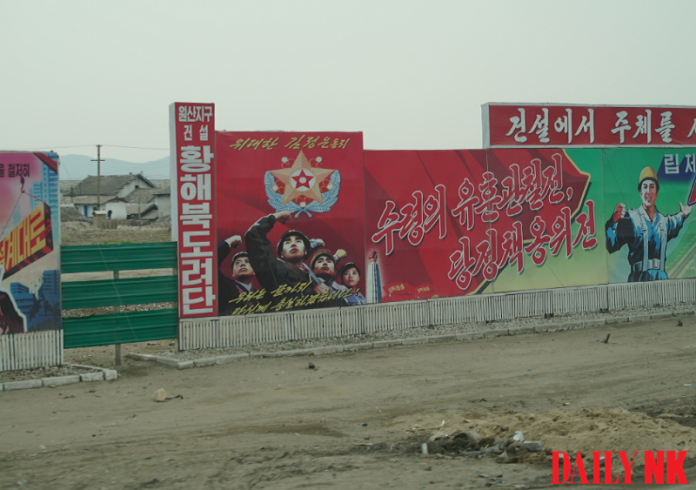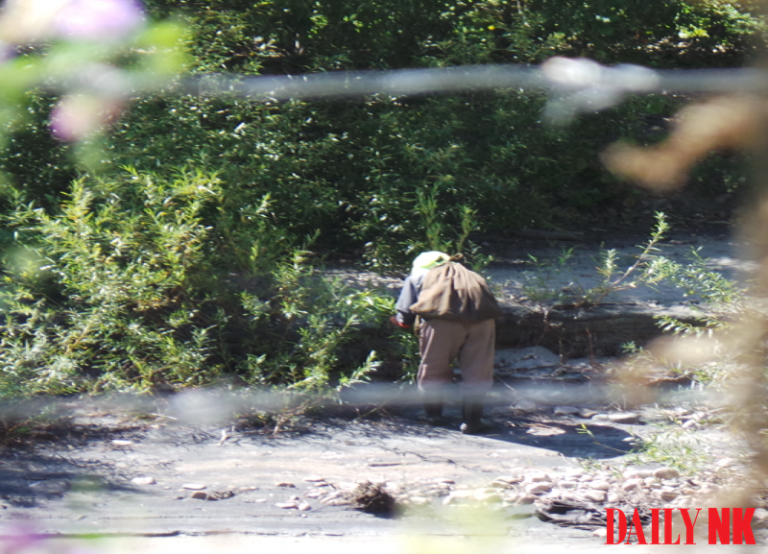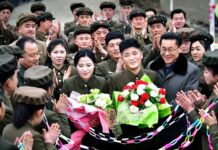
Unification Media Group (UMG): It’s time for another weekly update and we’re speaking with reporter Kang Mi Jin to hear about the newest social and economic trends in North Korea. Mi Jin, can you tell us the latest?
Kang Mi Jin (Kang): The rural mobilization period is nearing its end in North Korea, so there have been more talks about this mobilization than the details of the US-NK summit. It seems that both farmers who work on their farms year long and urban residents who have been mobilized for this period are all hoping for the same thing —a bountiful harvest. A good harvest would allow farmers to spend the next year not worrying and people in the city to buy grain at a lower price.
A Pyongyang-based source said that residents are reading the Rodong Sinmun and hoping that the US-NK summit will help lift economic sanctions against North Korea, and that even residents who are not normally interested in politics are anticipating that things will get better after the summit.
UMG: Have there been any improvements in the people’s lives since the summit?
Kang: In terms of the domestic atmosphere, when the leader of North Korea goes overseas, residents are expected to overtly display greater loyalty. This may be easier to understand if explained in comparison to the family. There’s a general belief that when the father is absent, the household must be at peace for the father to be able to do his job well.
So orders were disseminated for all units to “reach higher levels of productivity during the Supreme Leader’s visit to Singapore for the summit with the United States” and for people to “show greater passion for loyalty.” This may not seem new to North Koreans, but nevertheless there was more work to be done from their perspective.
UMG: I heard there was a theft incident in the border regions after the US-NK summit.
Kang: In Hyesan, Ryanggang Province, there was a case in which some of the equipment at a school was stolen. A resident has been arrested and is being detained at a police station in relation to the incident. This resident was stumbling about the streets drunk while holding a computer monitor.
The individual stated that he found it on the road when questioned at the police station. Although it is difficult to conclude that the person committed the crime at that hour, according to the testimony of another resident who drank with the suspect, the fact remains that he was in possession of a stolen item.
The police officer in charge of the investigation suspected that it would have been impossible to steal anything at that hour, but says that it’s a tricky situation because the item was in the person’s possession.
UMG: I hope things work out. How has the Wonsan-Kalma Shore Tourist Zone construction been going recently?
Kang: All organizations are taking part in labor mobilization and businesses have additionally assigned two people each to the construction efforts because there were not enough storm troops for labor. However, the problem is that even though the authorities are trying to expedite the construction of the Wonsan-Kalma Shore Tourist Zone, residents are objecting to mobilization.
When residents work at their current jobs, they are generally allotted a reasonable amount of work. But at the construction site, they are placed under a considerable amount of pressure to work many times harder. For this reason, some residents are trying to avoid mobilization.
UMG: If that’s the case, I do not think the authorities will leave them alone.
Kang: The Supreme Command re-issued mobilization orders in provinces that failed to provide adequate numbers of workers, but residents are still resisting. Some are willing to risk punishment to evade construction mobilization.
There have been reports that this is more common among residents who earn their livelihood through farming. They want to be at home during the seeding season, which is the first stage of cultivation. The fact that there are numerous people like this in each region means that the storm troops in charge of the construction will have to assert control over the laborers.
For this reason, some local police stations have summoned mobilized laborers and held them responsible for those avoiding labor mobilization.

UMG: This problem would not have occurred if the North Korean authorities had helped residents make ends meet. I hope they will soon recognize the nature of the problem. Next, let’s talk about the latest market trends.
Kang: North Korean housewives are finding it easier to obtain vegetables and are feeling relieved of their concerns regarding side dishes. A source in Ryanggang Province says that there are plenty of vegetables available nationwide at the moment and this has allowed for more variety on the table. There are many vegetables that were grown in greenhouses including spinach, lettuce, Chinese cabbage, cucumber, eggplant, and so on.
Beginning in the middle of April, North Koreans gather herbs that grow in the wild and use them to make soup and side dishes. Residents who work outdoors can make side dishes on the spot out of various herbs with only a little bit of red chili paste.
UMG: What about Ryanggang, your home province?
Kang: In Ryanggang Province, the sprouts and roots of ladybell and various species of aster scaber grow wild in the hills, so as long as you are diligent, there’s generally enough seasonal wild herbs to eat. Thanks to the efforts of residents, wild herbs are also available in the markets. By the time the wild herbs are gone, the vegetables mentioned earlier come into the markets, which makes housewives happy.
Vegetables grown in greenhouses are expensive compared to seasonal vegetables, so ordinary residents are not able to purchase them often. Despite this, there are people who consume vegetables every day without spending money. Residents in rural areas eat wild herbs and vegetables grown at home as much as they please, starting from the end of April and early May.
UMG: I am curious about the price of vegetables currently sold in the markets in North Korea.
Kang: In Hyesan, Ryanggang Province, spinach is said to cost 1,000 KPW per kilo. Cucumbers and tomatoes grown in greenhouses sell for 2,000 KPW and 5,000 KPW, respectively. Eggplant sells for 1200 KPW and radish for 1,000 KPW.
A source said radishes were always sold at a higher price compared to Chinese cabbages, but are now being sold at the same price because they haven’t sold well. Radish is mainly used by vendors who sell noodles, but the price drop was inevitable due to competition with in-demand Chinese cabbage.
Cabbage is also among the produce that has been loved by residents in recent years. Cabbage kimchi, which is enjoyed by North Koreans in the summer, is a side dish popular all over the country. It may still take time for them to become more easily obtainable, but cabbages with shorter growth periods are becoming available on the market, so it has become cheaper for residents to buy them.
UMG: Since we are on the topic of side dishes in North Korea, what side dishes do North Koreans enjoy eating at home?
Kang: Families usually make side dishes using seasonal vegetables. I assume they would now be making side dishes that help cool off in the heat like mustard leaf kimchi, bean sprout kimchi, and spinach.
While people in urban areas make side dishes with vegetables sold in the markets, residents in rural areas frequently use wild herbs that are in season. Chamnamul (Pimpinella), a specialty of the northern alpine regions, is currently in season and I’m guessing that this together with other herbs like alpine leek would be adding variety to the tables.
This may not be common, but some people eat summer side dishes made the year before, such as pickled cucumbers and sesame leaves, to supplement their nutrition. Also, side dishes made with meat and seafood such as pork, beef, pollack, and Atka mackerel accompany meals when families are able to afford them. I think that various side dishes made with regional specialties including green garlic, seasoned onions, salted seafood, seaweed, and kelp would enrich people’s meals.

















